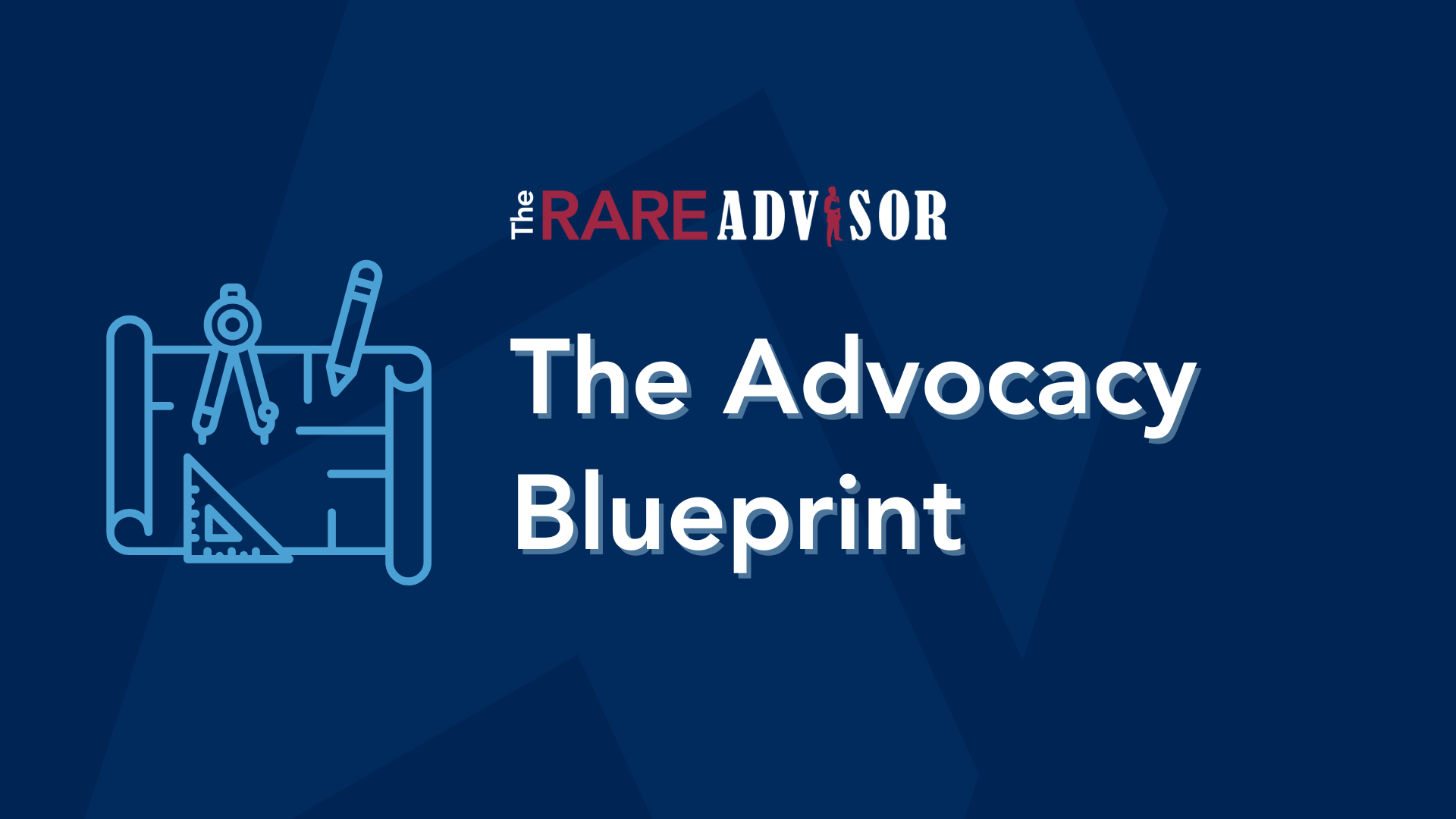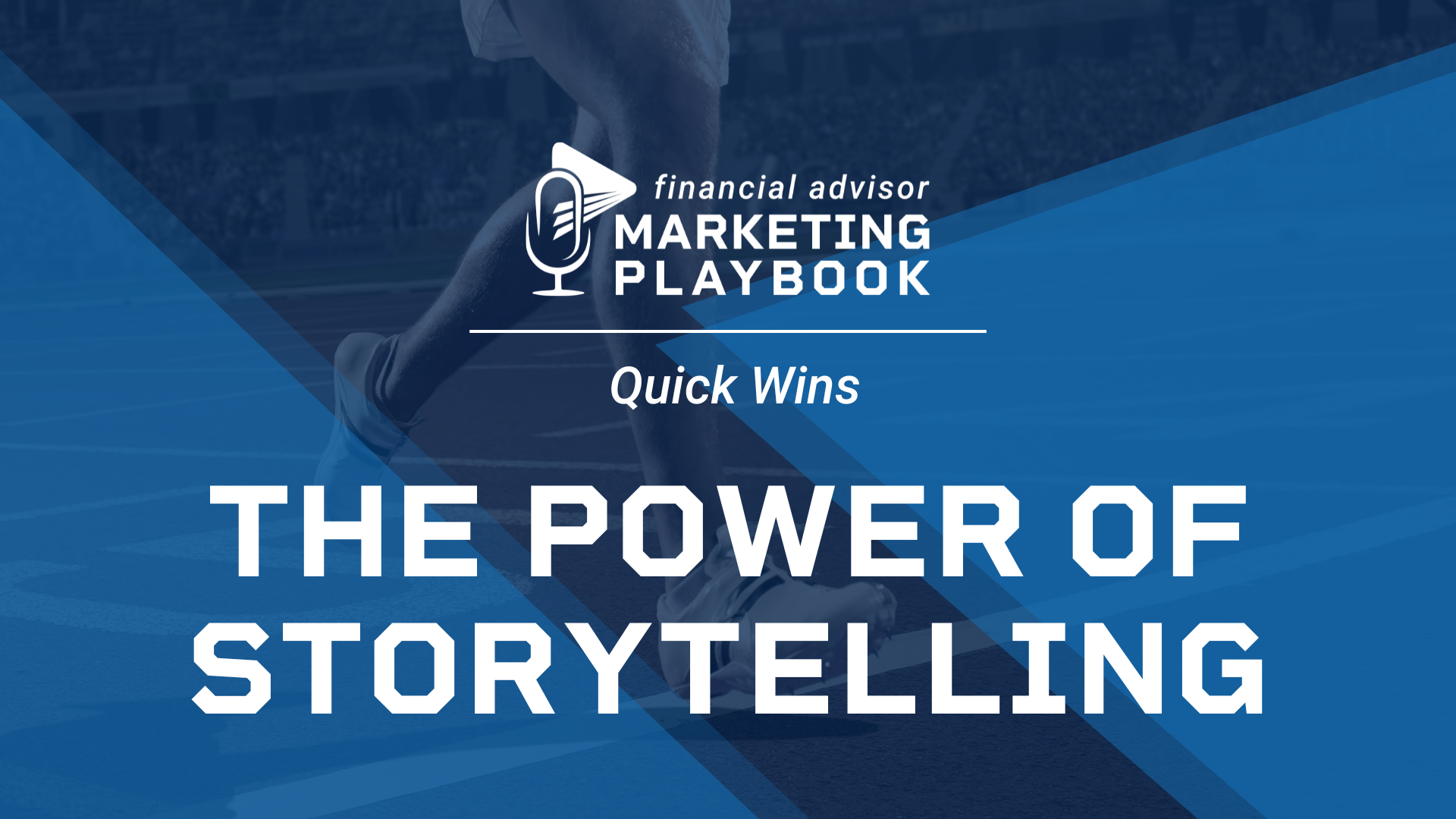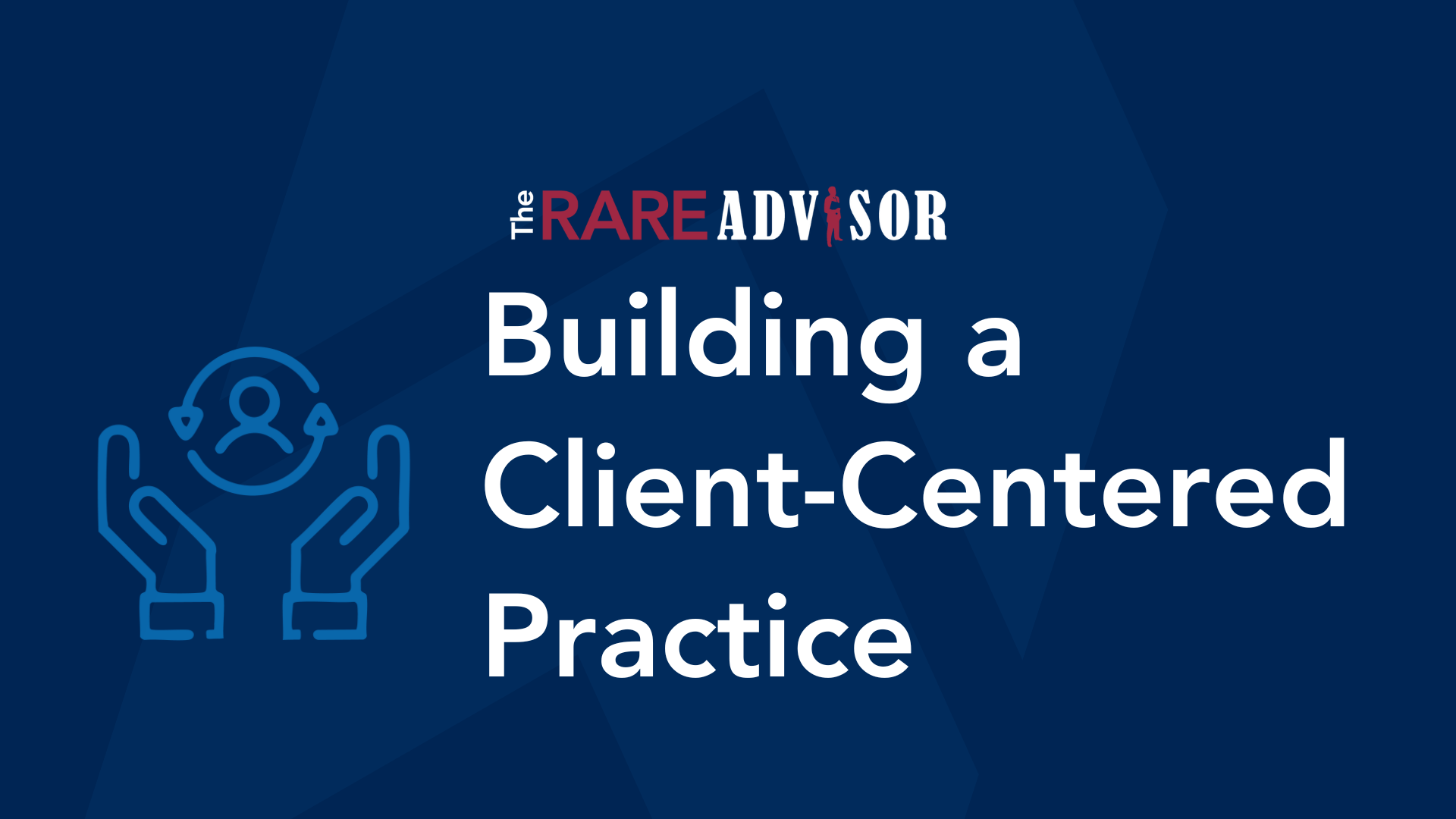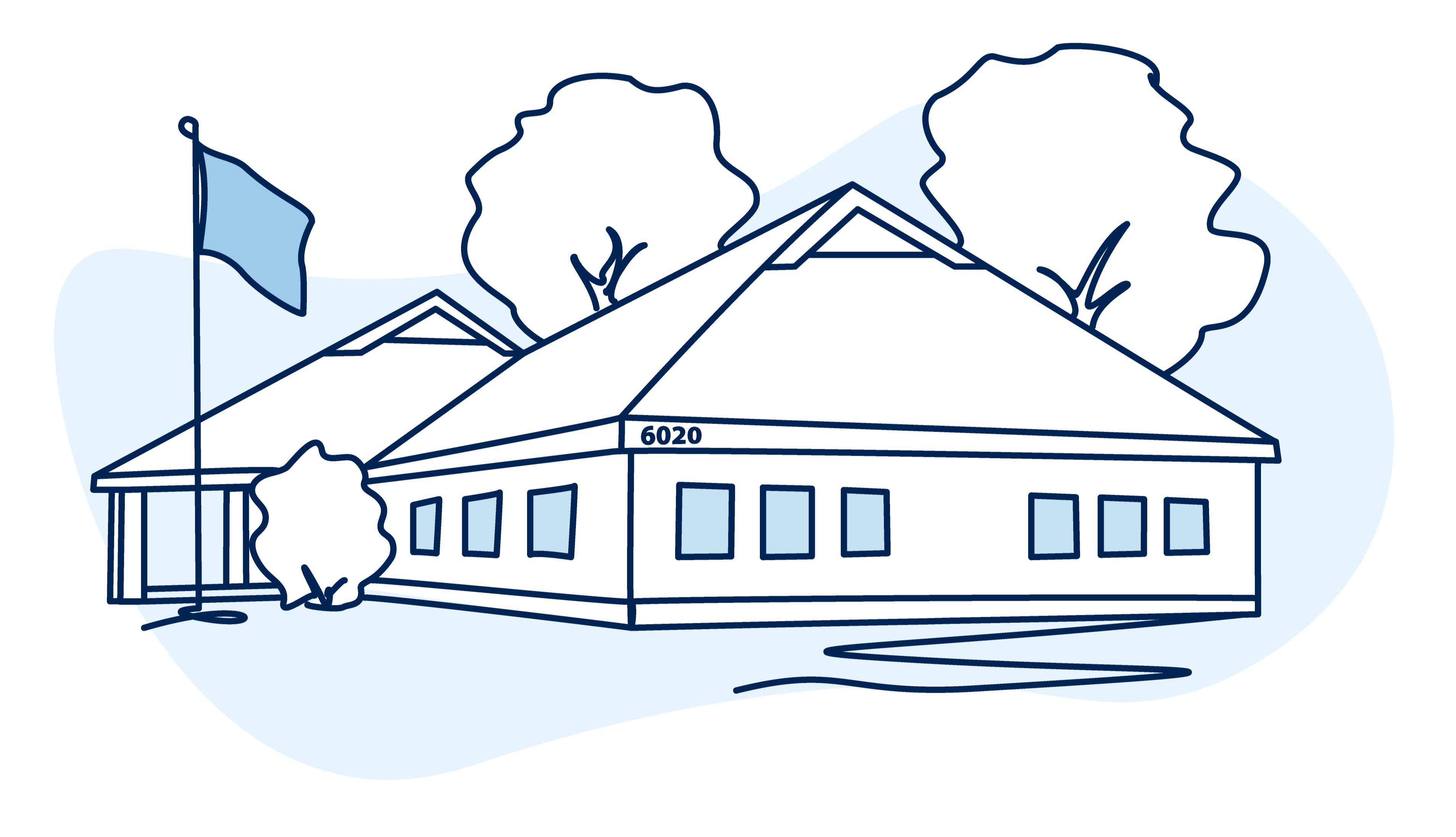The Advocacy Blueprint: It All Starts with The First 30 Days

In this episode of The Rare Advisor, Aaron Grady reveals how to transform the first four weeks of a client relationship into a powerful engine for client advocacy—without ever having to ask for referrals. Learn how to create emotional connection, professional contrast, and a first-class onboarding experience that turns new clients into raving fans. Aaron breaks down a simple, four-step process—thank you card, welcome packet, personalized gift, and a care meeting—to help financial advisors stay top of mind, build trust, and intentionally trigger word-of-mouth introductions. If you're ready to elevate your client experience and grow your financial advisory practice through advocacy by design, check out this episode.
SUMMARY
In this episode of The Rare Advisor, host Aaron Grady explores a critical but often overlooked aspect of client relationships: the onboarding process. Specifically, he emphasizes the first four weeks of a new client relationship as a defining moment—a window of time that can either solidify trust and advocacy or squander the opportunity for long-term engagement and referrals.
Grady begins by reframing how financial advisors typically view onboarding. Many treat it as a transactional phase—merely about paperwork, account transfers, or moving assets. However, clients perceive this time differently. For them, it’s emotional and full of anticipation. It’s not just the beginning of a business arrangement; it’s the start of a relationship. Grady argues that this is a golden opportunity to differentiate your practice, demonstrate your value, and trigger a lasting emotional impression. Most importantly, it’s one of only two peak moments in a client’s lifecycle when they are naturally inclined to advocate for their advisor. The first is during a time of crisis when the advisor provides unexpected value and guidance. The second is during onboarding, when excitement is high and expectations are fresh.
Grady presents a simple yet powerful four-week onboarding framework designed to create this advocacy intentionally. Each week serves a unique purpose and builds emotional connection and professional structure.
Week 1: The Thank You Card
The process kicks off with a handwritten thank you card. This small gesture sets the tone, showing intentionality, sincerity, and appreciation. It should not be a standard business transaction thank you, but a genuine message about the relationship. Grady advises against generic or cheap-looking cards; instead, he encourages using beautifully designed cards—small works of art that clients will be hesitant to discard. These cards often find a place on display, creating “shelf life” and serving as a subtle, constant reminder of the relationship.
The note itself should be personal, referencing something meaningful you learned during early conversations. Perhaps it’s about an upcoming trip, their children, or a recent life change. Personalization signals that the advisor listened and genuinely cares. Importantly, Grady stresses that you should thank the client for the relationship, not the business—again reinforcing that this is about human connection, not transactions.
Week 2: The Welcome Packet
In the second week, the advisor sends a welcome letter or packet. This serves as a professional touchpoint that brings clarity and sets expectations. The packet may include an introduction to the advisor’s team, contact information, a service roadmap, frequently asked questions, and even a team photo with names and roles. Grady encourages creativity—some advisors include QR codes linking to online portals or video introductions.
The purpose of this step is to eliminate ambiguity and reinforce professional contrast. It ensures the client understands who does what within the team, how to reach them, and what to expect moving forward. It also solidifies the advisor’s process as structured and intentional, not ad hoc or reactive.
Week 3: The Personalized Gift
The third week introduces a tailored gift. This step makes a strong emotional impact by showing the client they are known and valued. Ideally, the gift is based on personal details uncovered during the planning process—what Grady calls using “FORM” (Family, Occupation, Recreation, and Money). For instance, if a client loves wine, horseback riding, or golf, the gift might reflect that passion.
If personalization is too difficult at scale, advisors can select a high-quality standardized gift reserved for top-tier clients. However, personalization is ideal. The goal is for the gift to be thoughtful, meaningful, personal, and lasting. For example, some advisors give custom cutting boards engraved with the family name, complete with a display stand to encourage visibility in the home. Grady jokes that personalizing gifts with names or initials discourages re-gifting and helps keep the item—and the advisor—top of mind.
One important warning: do not put your firm’s logo on the gift. That changes it from a gift into marketing. The goal is to make the gift feel like it’s about the client, not a promotional item. There will be other times for logo swag, but this moment is meant to feel relational, not transactional.
Week 4: The Care Meeting and Statement Review
The final step occurs in week four, when the client receives their first statements. This is the perfect time to hold a care meeting. This meeting provides an opportunity to walk through the statements, reinforce the decisions that were made, answer any questions, and outline what’s ahead on the relationship calendar.
It’s also an ideal time to reinforce the advisor’s broader value and stewardship framework—reminding clients of the full scope of services available. Grady notes that this is when many advisors miss the mark. Too often, once the initial paperwork is completed, the advisor simply sets a follow-up for months later—or worse, goes silent until the next annual review. By having a care meeting now, you proactively address any confusion or second thoughts before they fester.
Perhaps most critically, this is when you set the stage for advocacy. You’ve just taken the client through a structured, intentional, and thoughtful onboarding process. You’ve shown care, attention, and value. Now is the time to remind them that the people who matter to them also matter to you. This is when the advisor introduces the idea of being a sounding board—not by asking for referrals, but by inviting the client to consider whether there are others in their life who may benefit from a similar experience. This approach aligns with the law of reciprocity: the client has just been shown exceptional care and is now naturally inclined to share that with others.
Throughout the video, Grady emphasizes the importance of intentionality and consistency. A great onboarding process isn’t accidental. It’s engineered. It combines emotional touchpoints (like the thank-you card and gift) with professional structure (like the packet and care meeting). This mix builds trust and confidence and increases the likelihood that clients will talk about their advisor when they’re not in the room.
Grady closes by challenging advisors to evaluate their own onboarding process. Is it consistent? Is it personal? Is it strategic? If not, it’s a missed opportunity. The first four weeks of a relationship aren’t just a welcome phase—they’re the foundation for a lifetime relationship and the most fertile ground for client advocacy.
He reminds viewers that clients rarely talk about what advisors do—they talk about how advisors make them feel. And that, he says, is the essence of advocacy by design.
TRANSCRIPT
Aaron Grady, Advisor Consulting Director at USA Financial - Welcome back to the Rare Advisor. I'm your host, Aaron Grady, and today we're unpacking the first four weeks of a client relationship, why it matters, how it shapes perception, and how it sets the stage for referrals and introductions without even having to ask. Now, the question often is, is why? Why does it matter? The problem is most advisors view onboarding as simply a transaction. It's something that is the end of the new process to onboard new assets or a new relationship, but your clients don't see it that way. This is a unique opportunity in the relationship. One that, quite frankly, you don't often get to repeat. This is a defining moment in the relationship. This is your chance to create professional contrast, to create a heightened level of engagement, and to make an emotional impact. Now, one of the conversations that we have quite often with financial advisors is helping them understand where the opportunities for advocacy absolutely lie inside of a relationship.
Now, there are typically two times in a client relationship where you, as a financial advisor, are the absolute peak of advocacy, where your clients just want to run out and talk about you. One of those times is during a moment of crisis, either personal or financial, and how you, as the financial advisor, step in and help shepherd them through that moment. And since you've gone above and beyond what their expectations were as a financial advisor, they want to naturally go out and talk about you. The other time, in a client relationship where you're at the absolute peak of advocacy is during the onboarding process. It's a new relationship. It's new, it's exciting. You've solved a potential major issue or challenge in their life. This is an opportunity when they say, you know, the old adage of you don't get an opportunity to make a great first impression. It's also that same way inside of the client advisor relationship. This is an opportunity to set the tone, to show them that you are different and that it's that you're process is built more on relationship than on business arrangements. And so understand that advocacy isn't a request, it's a response to an experience that you've curated and created for your clients. And so what we're going to talk about in the next few minutes is how you can create a simple, intentional, organized process to drive client advocacy. This is simply handled over four weeks, and this usually typically starts for any advisory team at some point. Once paperwork has been signed, once assets are on the move, when you know that this new prospect has become a new client. Now understand this is not about checking boxes, it's about orchestrating a first class experience that creates advocacy. know, part of advocacy, and this is a conversation that we have quite often as well, is part of client advocacy is remaining top of mind. Top of mind awareness and the opportunity for your clients to be thinking about you when they otherwise wouldn't is something that has to be done with intention. Understand that your clients have so many things, just like you do in their life that are warring for their attention. The moment they leave your office, they may be riding high on the opportunities you've created for them or the problems you've solved or this peace of mind that you've given them. However, the minute they leave your doorstep,
They constantly have all these other things that are vying for their attention. Vacations, children, grandchildren, know, just life in general. And so, because we know that this is one of those unique moments in the client relationship, we are at the peak of advocacy. How do we extend this honeymoon phase? How do we stay in front of your clients when they are in this window of time where they want to talk about you? And so again, we do it through a four-step process that covers four weeks.
So in the very first week, once we've deemed this is the start of our new client onboarding process, in the very first week you would send a simple handwritten thank you card. It's thoughtful, it's written by you, it shows intentionality. The fact that you as an advisor will take a few moments out of their day to pen down a simple note and message to them is a meaningful gesture. It creates emotional and physical shelf life and shows sincerity. Now, when we talk about shelf life, you can extend that shelf life by picking out a beautiful thank you card. This is not the standard, you know, office depot says thank you on the front. This is a little beautiful work of art. We talk about one of the organization's lavish cards has some great ones. You can go out and have some of your own made, but these are little beautiful works of art that you will be, you will set on the mantle piece and you'd be afraid or maybe not afraid, but you would, you'd feel bad throwing it in the trash can. These are, something that people want to hold on to and that they show that you took a little time, you invested some money into this effort. And so the beautiful card is one step towards that. It's on nice stationary. And then one other thing you might want to consider is make sure that you put a personal note in there. This is something that speaks to them. Maybe it's something you picked up during the onboarding process. Maybe it's talking about an upcoming trip or a family vacation, or maybe it's talking about the kids.
It's something that shows that you absolutely listen and heard them. The other thing, the one last thing I will say about the card is always thank them for the relationship. Never thank them for the business. This is about creating professional contrast, about being different. Not about a business transaction, but more about a relationship. So in week two, and this will come obviously a week later, would be a welcome letter or packet. Now in the simplest sense, this could be just simple, a letter, a professional, on your letterhead, branded letter that speaks to what they can expect, maybe a roadmap of what's to come in the next few months or years, contact information for key members of your team, maybe an overview of your services, and then maybe even a printed photo with team names and roles, phone numbers. I've had teams that have put QR codes on there that give quick access to websites and other elements. I've had teams that have built complete welcome packets that have
You know, really like a step-by-step guides into how to get access to account information and other tools and resources. But remember, again, this is just another touch point. Don't think of it as checking a box. This needs to be professional done and done with intention. But this is another opportunity to create professional contrast and it helps remove any ambiguity, sorry, ambiguity of who you are and what your team does and their roles. So, you if you've got team members who are actually gonna pick up the baton and run with things going forward, if you work in a team setting, this is another great opportunity to reinforce that. In the third week, now this is where this is, you can make the really big emotional impact. In the third week, this is where you would introduce a tailored gift. Now, there is purpose to why the gift would fall into week three.
And that's because this gives you the opportunity to maybe make the gift about the client. In a perfect world, I always ask an advisor, how many new clients do you typically onboard in the course of a year? And if the answer is less than a dozen, or maybe a dozen, one a month, maybe two a month, the question I always ask is, could you personalize this gift? Could you make this gift more about the client?
Could you use things in the term that we always use, we use the idea of form, family, occupation, recreation, money, the personalized information that you've garnered from this person through the onboarding process or through the new client process, could you make this gift completely about them? And so if the answer is yes, then great, then this is something we can talk about right now. But I have some teams that say, you know what, we're just gonna standardize this gift, we're gonna make it something that is a, that's gonna be high quality, that's gonna be.
You know, unique to our firm, but it's going to be something that we do for all of our top tier clients. And understand, this is something that you typically would do for your top tier. Now, as we talk about going through the new client process and client classification, it's all about narrowing your focus to a type of client, your ideal client that you wish to onboard. And at some point, every financial advisory practice gets to a point where they're only looking to onboard new, ideal clients.
If you're in the case where you're still onboarding clients of all levels, then maybe you reserve a tailored gift experience for those at the top tier. Now, what I will say is, if you're going to make this gift about the client, then what I would say is you want to remember these things. Start off by making the gift thoughtful. And quite frankly, the gift in and of itself is just thoughtful. The fact that you're going out of your way to give a gift to the client is thoughtful. Make the gift meaningful.
That's the idea of using the concept of form, family, occupation, recreation. The idea of making this gift about them. They love to travel or they like horses or they like wine. Personalizing or making the gift meaningful about them. Personalize. Make the gift about them by putting their name on it. I jokingly tell advisors often that by putting the client's name on it or maybe their initials, you lower the risk that they might try to re-gift it.
And at the very least, if they're going to re-gift it, if you put their last name on it, they're gonna keep it in the family. And you get some shelf life out of it that way. And then lastly, what I would say is, you wanna make the gift lasting. The joke I always tell is don't buy logo golf balls, because if they play golf like I play golf, they're gonna lose most of those golf balls within the first round. So make the gift thoughtful, make it meaningful, make it personal, make it lasting.
And this signals that you listen and you care. It reinforces that this is about a relationship, not a transaction. And then lastly, about the gift, what I would say is this. This is a mistake that often too many times advisors make. Do not, do not put your logo on it. The minute you put your logo on something, it stops being a gift and it starts being marketing. Signifying that it's about you and not about them. There's lots of opportunities and times for you to give your clients items that have your company logo on it, golf shirts, hats, yetis, any number of items, and that's absolutely wonderful. And I've been showered with those type of offerings from advisors I work with, and they're appreciated. But this is a unique opportunity to make it solely about the client. Make this a gift about them.
Something that as every time they see it, every time they walk by it, every time that they, you know, step into their kitchen and they see this, they think about the unique and special relationship they have with, of all people, their financial advisor. A unique little story is I have some advisors who will do custom cutting boards with the family name on these. I always tell advisors if you're going to do that, spend the extra $8 and buy a custom stand for it. Because what you're telling the person on the other end is this is meant not to be tucked into a cabinet hidden away from sight, but it's to be set on the countertop or in a display area so that all can see it. And where do a lot of people hang out? When they spend time at, know, if you're like my family, we all gather together, we all end up hanging out in the kitchen as we're making food and we're talking and we're telling jokes. And so if it's hidden away in a cabinet, you're losing some of that opportunity for shelf life. So just some simple ideas on gifting. We could talk all afternoon about the idea of types of gifts and what makes it special. now we're on to week four. So the last element of this four step process would be the first statement and care meeting. Now the idea around this is this is an opportunity to bookend and kind of finalize this honeymoon window. Holding a care meeting typically happens when the first statements have arrived. This is an opportunity for you or a member of your team that you trust to walk through the statements to answer questions.
This is an opportunity to reinforce the decisions that the client has made. It's an opportunity to address any early concerns before we get too far down the road. And this is an opportunity to outline the relationship calendar. You know, what's going to happen in coming weeks and months, or maybe walk through your service matrix or your stewardship framework and talk about all the other things that the concierge level of treatment that they get for being one of your best new client relationships. There's a unique opportunity here. that's missed by so many, so many times advisors will sign on the, have the client sign on the dotted line and then they maybe set the next appointment. Oftentimes they don't even do that. It's thank you, see you later. And then six months later you may be here for the advisor or 12 months later you're here when it's time to, you know, do the annual review meeting. And so what I would tell you is this is a moment where you get to frame your process and talk about how it helps take care of the people that they care about.
This is a unique opportunity for you to talk about your sounding board and how if there are people in their lives that are important to them, they're important to you as well and how you are there to act as a sounding board for those that they care about and their loved ones. Remember, the law of reciprocity. You've done something nice to them. You've showered them with all of this attention. You've shown them that you are unique and different. You've created professional contrast.
And so now there's an opportunity to let them know that, if we've done this for you, there are others in your life that are important. We could be important for them as well. And so how this process creates advocacy is important to understand. So understand that advocacy is not accidental. This is an engineered process that is thoughtful and it has intentional steps. By creating these opportunities where we combine emotional touch points, the thank you card and the gift with professional structure, the packet and the meeting, you continue to build trust, you continue to reinforce confidence, and you get the opportunity to trigger conversations outside of your office. Remember, top of mind awareness. This creates an opportunity where they can talk about you when you're not around. Remember, clients don't talk about what you do. They talk about how you make them feel. And so, the four week process in the short form is week one builds emotion through a card. Week two creates clarity or adds clarity through either a letter or welcome packet. Week three personalizes through a personalized gift. Week four reinforces your process by reviewing the statements, reviewing your stewardship framework or service matrix, the client calendar, the relationship calendar, and reviewing the decisions they've made. Together, these build a client for life. And more importantly, they create an opportunity for advocacy by design. And so what I would challenge you to do is think about your own welcome process. Is it consistent? Is it personal? Is it strategic? If you like what you've heard today, remember as always, like and subscribe. And as we always say, when the why is clear, the how becomes easy. So never lose sight of your why.
--
The RARE Advisor is a business model supercharged by Recurring And Repeatable Events. With decades of experience coaching successful advisors, your host, along with other leaders in the industry, discusses what it takes to grow a successful practice. With the aim of helping financial professionals and financial advisors take their business to the next level, this podcast shares insights and success stories that will make a real impact. Regardless of the stage of your practice, The RARE Advisor will provide thoughtful guidance, suggestions for developing systems and processes that work, and ideas for creating an authentic experience for your clients.
The RARE Advisor is also a podcast! Subscribe today via Apple Podcasts, Google Podcasts, or your preferred podcast listening service for easier on-the-go listening.
Author Info

Aaron Grady is the Advisor Consulting Director with USA Financial. He brings more than 18 years of Financial Services industry experience...
Related Posts

The Power of Storytelling: 3 Essential Stories Every Financial Advisor Needs
In this episode of Financial Advisor Marketing Playbook, Mark Mersman reveals how storytelling can transform your marketing and client relationships. Learn the three foundational stories every advisor needs: your origin story to build trust, your client transformation story to demonstrate results and empathy, and your philosophy story to define your beliefs and differentiate your brand. Discover practical tips for crafting these narratives and integrating them into your website, meetings, and marketing strategy.

Building a Client-Centered Practice: Insights from Duncan MacPherson & Pareto Systems
In this episode of the Rare Advisor, host Aaron Grady sits down with Duncan MacPherson of Pareto Systems to unpack the “Always On” client experience from The Blue Square Method—showing financial advisors how to move from personality-driven to process-driven, scalable firms. You’ll learn the four quadrants (Onside, Onboard, Ongoing, Onward), why a documented fit process and onboarding sequence create professional contrast, how the 12-4-2 service model competitor-proofs relationships, and why systematizing moments of truth builds advocacy and referrals. We cover turning know-how into intellectual property (playbooks/SOPs), becoming “fee-worthy” and referable, leveraging the Pareto principle for AAA clients, and shifting from B2C to B2B growth.

From SEO to AEO: How Financial Advisors Can Rank in ChatGPT & Google AI
In this episode of The Financial Advisor Marketing Playbook, Mark Mersman explores the fast-emerging concept of Answer Engine Optimization (AEO)—how advisors can adapt their websites and content strategies for the AI-driven search era. As traditional SEO gives way to AI search tools like ChatGPT and Google’s AI Overviews, Mark explains what this shift means for financial advisors and how to stay visible in a world where consumers ask questions directly to AI instead of clicking through search results. He shares practical, actionable steps—like writing with user intent in mind, expanding website depth and breadth, structuring Q&A sections, and earning external credibility—to help advisors ensure their content is surfaced in AI-powered search results. If you want your firm to show up when prospects ask financial questions to AI, this episode is a must-watch.

The Power of Storytelling: 3 Essential Stories Every Financial Advisor Needs
In this episode of Financial Advisor Marketing Playbook, Mark Mersman reveals how storytelling can transform your marketing and client relationships. Learn the three foundational stories every advisor needs: your origin story to build trust, your client transformation story to demonstrate results and empathy, and your philosophy story to define your beliefs and differentiate your brand. Discover practical tips for crafting these narratives and integrating them into your website, meetings, and marketing strategy.

Building a Client-Centered Practice: Insights from Duncan MacPherson & Pareto Systems
In this episode of the Rare Advisor, host Aaron Grady sits down with Duncan MacPherson of Pareto Systems to unpack the “Always On” client experience from The Blue Square Method—showing financial advisors how to move from personality-driven to process-driven, scalable firms. You’ll learn the four quadrants (Onside, Onboard, Ongoing, Onward), why a documented fit process and onboarding sequence create professional contrast, how the 12-4-2 service model competitor-proofs relationships, and why systematizing moments of truth builds advocacy and referrals. We cover turning know-how into intellectual property (playbooks/SOPs), becoming “fee-worthy” and referable, leveraging the Pareto principle for AAA clients, and shifting from B2C to B2B growth.

From SEO to AEO: How Financial Advisors Can Rank in ChatGPT & Google AI
In this episode of The Financial Advisor Marketing Playbook, Mark Mersman explores the fast-emerging concept of Answer Engine Optimization (AEO)—how advisors can adapt their websites and content strategies for the AI-driven search era. As traditional SEO gives way to AI search tools like ChatGPT and Google’s AI Overviews, Mark explains what this shift means for financial advisors and how to stay visible in a world where consumers ask questions directly to AI instead of clicking through search results. He shares practical, actionable steps—like writing with user intent in mind, expanding website depth and breadth, structuring Q&A sections, and earning external credibility—to help advisors ensure their content is surfaced in AI-powered search results. If you want your firm to show up when prospects ask financial questions to AI, this episode is a must-watch.

